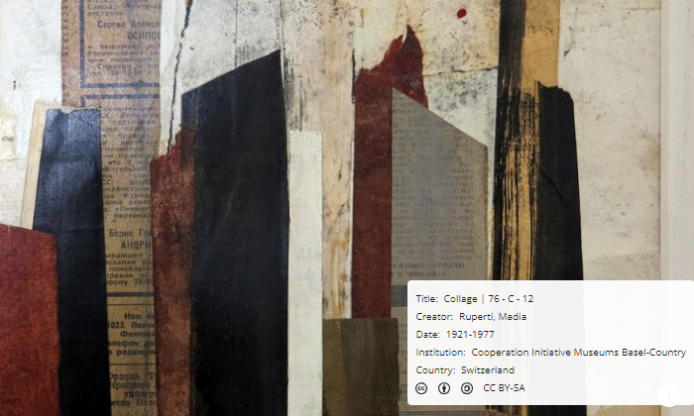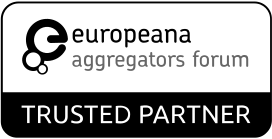image from Europeana Pro blog, Collage | 76 – C – 12, by Ruperti, Madia, 1921-1977 – Cooperation Initiative Museums Basel, Switzerland, CC-BY-SA.
With the scope of exploring development paths for the Europeana aggregation architecture and processes, a new task force within the EAF Europeana Aggregators Forum is operating to familiarise the aggregators with decentralised technologies, presenting various approaches and initiatives. The TF also takes a focus on SOLID protocols also comparing the Linked Data approach and a SOLID-based approach to the Data Space. The work of this SOLID-based TF is in facts complementing the work of ENA/EuropeanaTech’s Task Force on Linked Data.
Activities in the TF include a survey of the aggregation landscape from the perspective of decentralised aggregation, to discuss challenges and opportunities from the point of view of Europeana aggregators. Photoconsortium was engaged in an interview on 16 February 2023. During the interview held with TF coordinators Marie-Véronique Leroi, Kerstin Arnold and Pavel Katz, the discussion focused on understanding the background, the point of view and the vision of Photoconsortium, as an association-based Europeana aggregator, in the new scenario of digital cultural heritage sector.
Particularly, open challenges need reflection especially in the light of transitioning towards the new Data Space for Cultural Heritage, clarifying how this links to the current workflow in respect to Europeana, and how this truly enables or facilitates reuse of cultural collections in other sectors. Also, expectations relate to fostering identity building process, job creation, growth, development based on digitized cultural collections and other cultural assets.
Main hoped impact for the new Data Space(s) and its decentralized and open ratio is, in Photoconsortium’s view, that it will enable more effectively the inclusion of smaller and micro archives and cultural institutions, public and private ones, in the digital transformation process. Often, these stakeholders haven’t reached a good level of digital maturity yet, mostly due to lack of resources and capacity, which prevents them to innovate their processes and fully leverage the potential of digital collections to support their institutional mission. In this light, aggregators like Photoconsortium are called to be facilitators of the inclusion process for the participation in the Data Space. Offering additional support, resources, capacity building, access to technologies, new tools and more modern workflows to be implemented should in facts lower the barriers and enable the Data Space for Cultural Heritage to become more inclusive and representative of the richness of European cultural collectons.
More about the Task Force: https://pro.europeana.eu/project/solid-based-decentralised-aggregation-task-force
This action and blog are part of the European Data Space for Cultural Heritage activities, financed by the Digital Europe Programme of the European Union.


